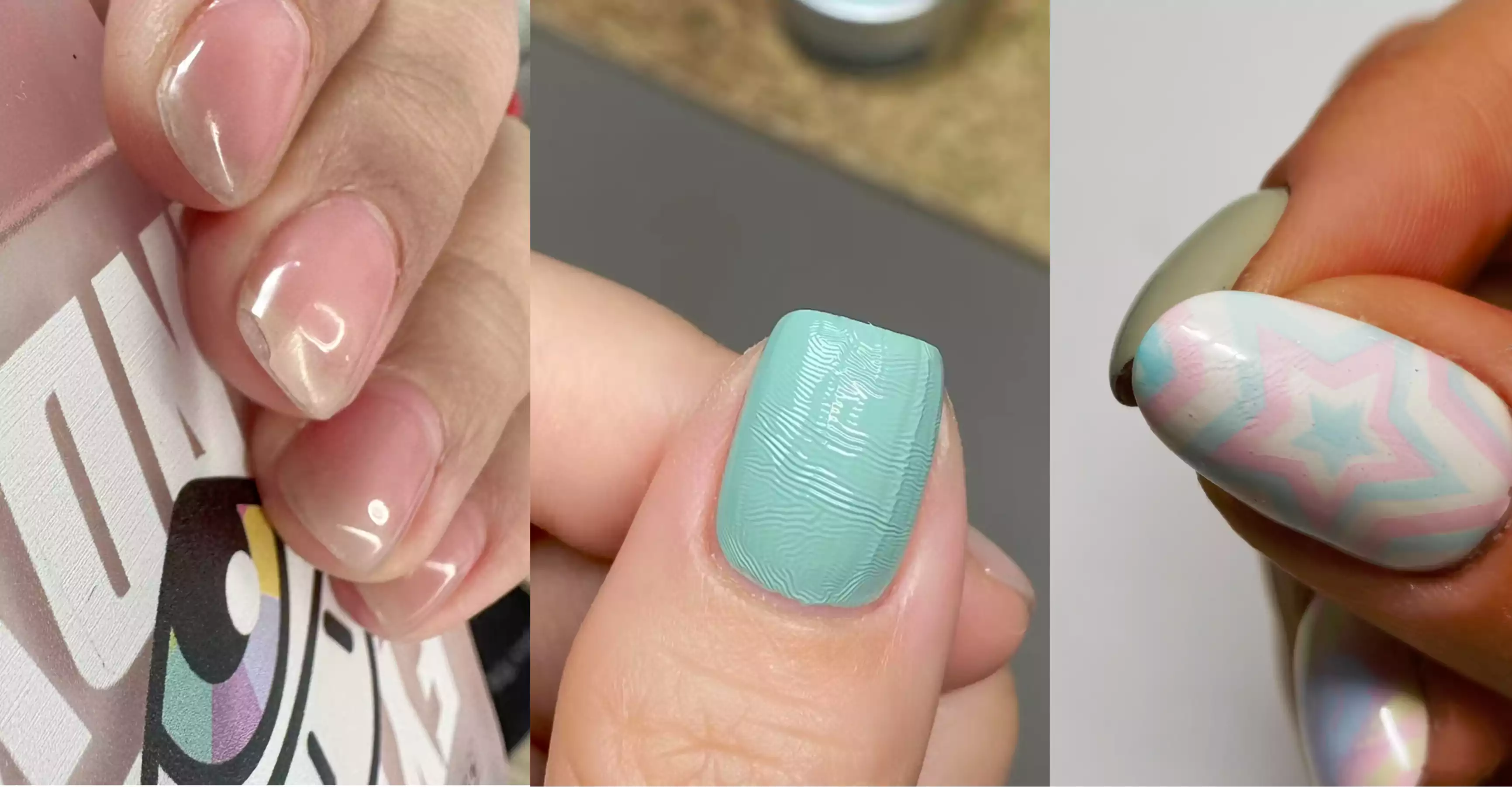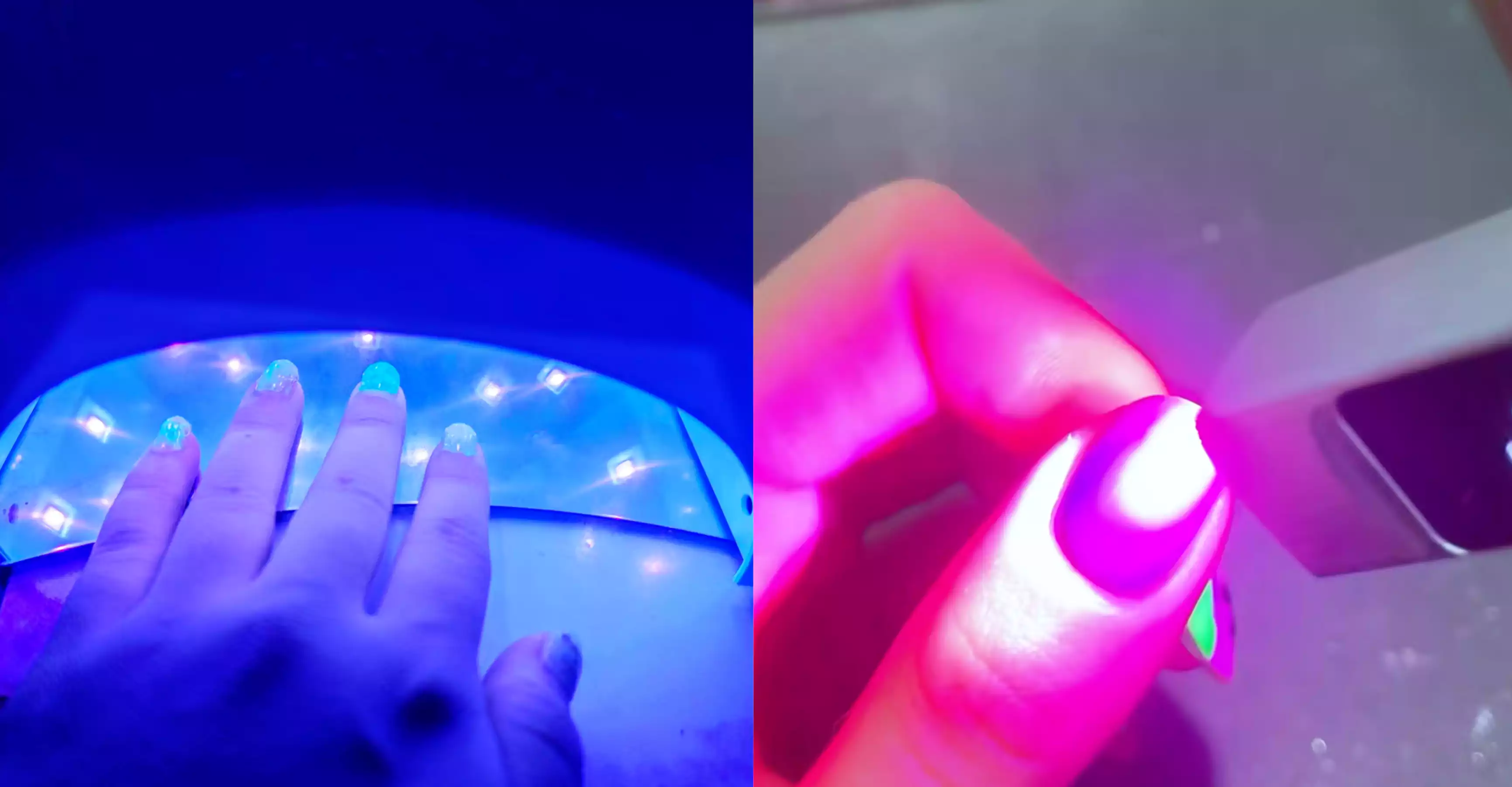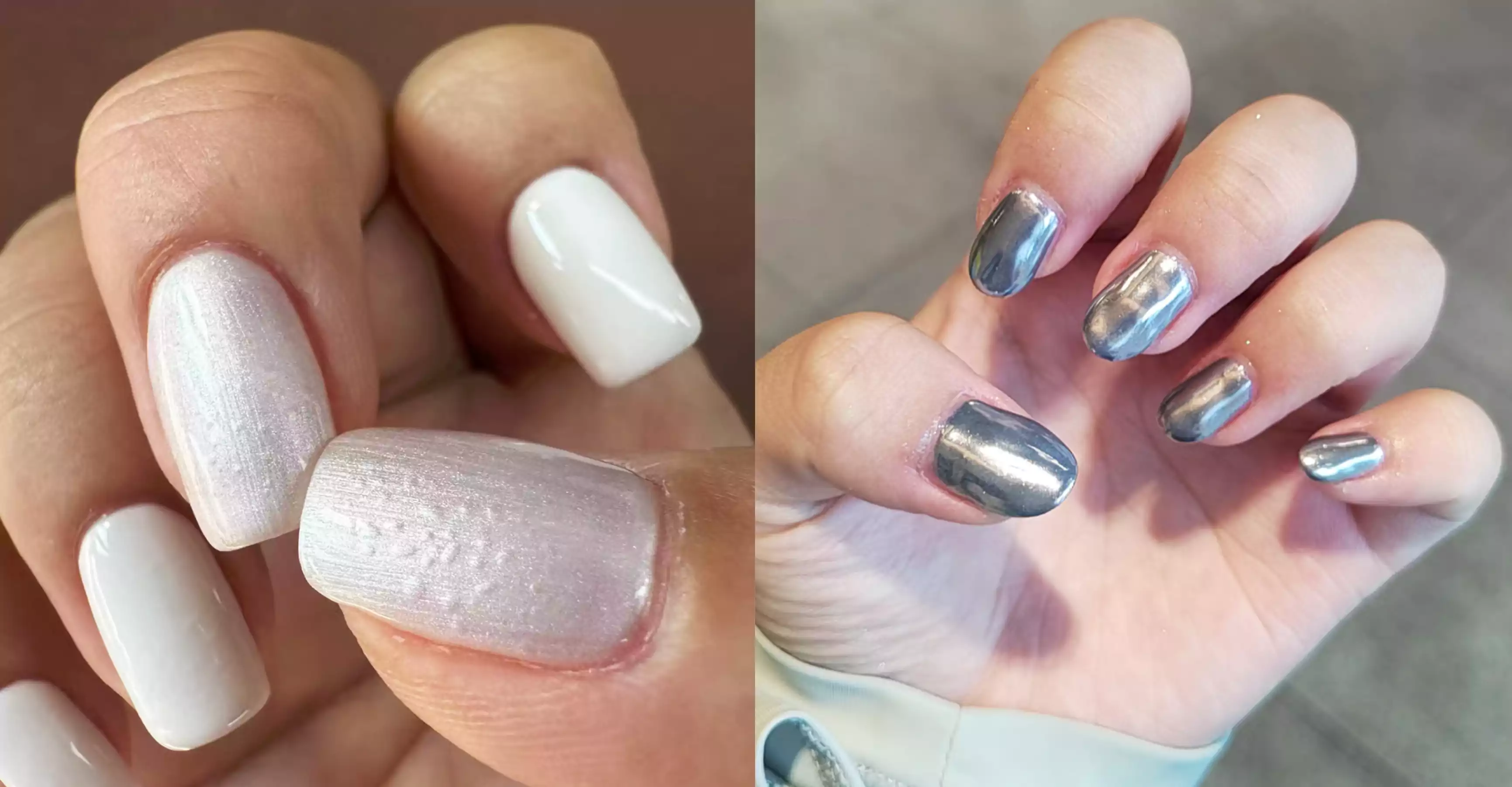Common nail art problems and solutions
Hello everyone! I’m a star employee at CHROMÉCLAIR, a brand of hematologic-free gel polish.
 Nowadays, gel polish is commonly used in manicures. Its emergence solves the problems of slow drying, short shelf life, harmful ingredients, and irritating odors associated with gel polish. However, in actual use, various problems often arise, such as delamination, lifting, cracking, reduced gloss, discoloration, and even entire pieces falling off. Today, let’s share some tips on how to address various issues with gel polish.
Nowadays, gel polish is commonly used in manicures. Its emergence solves the problems of slow drying, short shelf life, harmful ingredients, and irritating odors associated with gel polish. However, in actual use, various problems often arise, such as delamination, lifting, cracking, reduced gloss, discoloration, and even entire pieces falling off. Today, let’s share some tips on how to address various issues with gel polish.

- Why won’t my gel polish dry?
A: Too much adhesive has been applied to the nail polish. A thin, even layer is all that’s needed. (The correct amount: 0.1ml per pair of hands.)
B: The light from the light therapy lamp is insufficient or the lamp is aging.
Correct method: Check the equipment and replace the problematic lamp or light therapy unit.

C: The exposure time is too short, resulting in incomplete curing of the nail surface.
Correct method: Ensure each exposure time is at least 60 to 120 seconds.
D: The nail surface is not facing the light properly, resulting in incomplete exposure. Correct method: Hold your hand upright when applying the light, with your thumb flat and positioned to operate the light.
- Why does gel polish wrinkle?
A: The color is applied too thickly.
Correct method: Follow the first gel polish precaution.

B: The lighting time is too short, only the surface layer is cured, which is prone to deformation and wrinkling.
Correct method: Make sure that each lighting time is not less than 60 seconds to 120 seconds.
- Why does gel polish have particles?
A: Not using a brush to remove dust after polishing. Particles can form if dust is not completely removed.
Correct method: Use a brush to remove dust from the surface after polishing.
B: Applying too quickly can easily create bubbles and particles.
Correct method: Control your speed and pressure, and maintain a steady flow. Be sure to apply the polish gently to avoid bubbles. Applying too much pressure or too quickly can easily create bubbles, resulting in small particles that look like impurities. Applying the polish at a 180° angle can also cause particles and result in uneven application.

C: The bottle opening has not been cleaned for a long time, causing debris to be carried into the bottle by the brush.
Correct Method: Clean the opening of the gel polish bottle regularly to reduce or eliminate debris.
D: During application, the brush or bottle opening is exposed to the light therapy lamp, causing the cured glue to be carried into the bottle.
Correct Method: When using, keep the open gel polish facing away from the light therapy lamp to prevent it from curing easily.
- What should I do if small bubbles appear during application?
If small bubbles appear during application, simply brush gently with a brush and gently smooth them away.

- How can I prevent gel polish from peeling when applying?
When applying, leave 0.8 mm between the back edge of the nail to avoid it sticking to the cuticle and causing peeling.
- How can I prevent gel polish from peeling or peeling at the nail tip?
A: Applying too close to the cuticle or applying too thick a layer of polish near the cuticle can cause it to peel.
B: Gently crimp the front edge of the nail to prevent peeling.

- Why isn’t the gel polish glossy after applying a top coat?
A: Improper cleaning technique, not thorough and thorough.
Correct Method: Use gel remover. Do not rub the nails back and forth. Use one cotton pad per nail, washing each nail twice.
B: The top coat of gel polish needs to be applied twice: the first coat should be applied under the lamp for 2 minutes, and the second coat should be applied for 4-6 minutes. This will result in insufficient curing strength.
Correct Method: Strictly adhere to the standard time for the top coat.
Apply two thin coats of top coat.
- Why does gel polish crack?
A: The top coat is too thin. You need to apply it twice. A top coat that is too thin is not strong enough and is easily abraded by heavy objects.

B: Using a wash-free sealer. This is because wash-free sealers are inelastic and brittle after curing. Gel polish, on the other hand, is very elastic and cannot effectively prevent the wash-free sealer from deforming or cracking. Therefore, a removable wipe-on sealer should be used.
C: Real nails are too thin and soft to deform easily under stress, and prolonged deformation and stretching can lead to fatigue and damage.
Correct Method: After applying adhesive to soft nails, apply a layer of removable clear modeling glue to increase the hardness of the nails.
- Why can’t I remove my gel polish cleanly or thoroughly?
A: The gel polish is coated with a non-removable sealant, preventing the remover from penetrating. (You can remove the non-removable sealant first.)
B: The tinfoil isn’t wrapped tightly enough, causing the remover to evaporate and not seal properly, making it difficult to remove cleanly.
Correct Method: Cut the tinfoil larger to completely cover the nail and prevent any gaps.
C: The polish was wrapped for too short a time, preventing the remover from completely penetrating the nail.
Correct Method: Ensure the polish is wrapped for at least 5 minutes.
Lifting
The adhesive layer of gel polish, with or without the base coat, separates from the natural nail surface, causing the edges to lift. This is the most common problem.
· Nail grease residue
If the natural nail surface is not cleaned thoroughly and carefully, the grease film on the surface will not be completely removed. If the nail surface is not properly protected after cleaning and is repeatedly touched, it may cause lifting.
· Not using the same brand of base coat
When applying gel polish, it’s recommended to use products from the same brand and series for better reliability. Mixing products from different brands without fully understanding their characteristics can lead to adverse effects.
· Using the drying adhesive used for acrylic nails
Some people use the drying adhesive used for acrylic nails to make their nails last longer. This is counterproductive, causing the polish to quickly peel and flake. Modern gel polish is removable and should not be mixed with acidic substances, let alone used as a primer.
Delamination
Delamination occurs when the colored layer of gel polish separates from the topcoat. Air can enter the separated areas. This is a common problem.
Causes:
1) Not using a topcoat of the same brand.
2) Not using a wipeable topcoat.A removable, wipeable topcoat should be used.
3) The leading edge of the nail is not properly sealed. Each layer of glue should be sealed, not just the final topcoat.
4) After the color glue is exposed to light, scrub it with a cleaning solution before applying the topcoat. It is not necessary to scrub the color glue after exposure; applying the topcoat directly will prevent delamination.
5) The color glue layer is too thick, so the topcoat is too thick.
CHROMÉCLAIR offers Base coats, Top coats, solid color gel polish without HEMA, and hema free cat eye gel polish.
Their website also features nail art tutorials, such as:
Easily create high-quality pearl manicure at home!
How to Do the Pink Buccellati Nail Art at Home?
